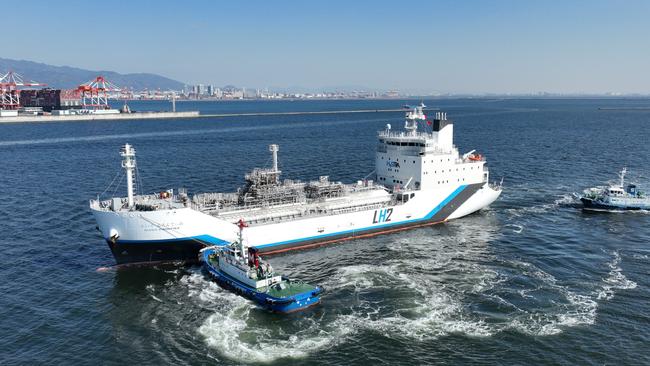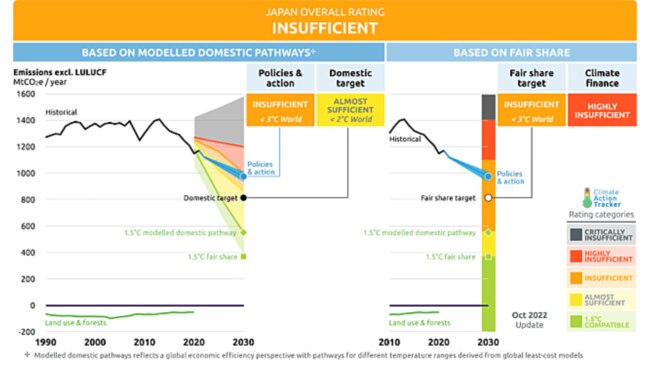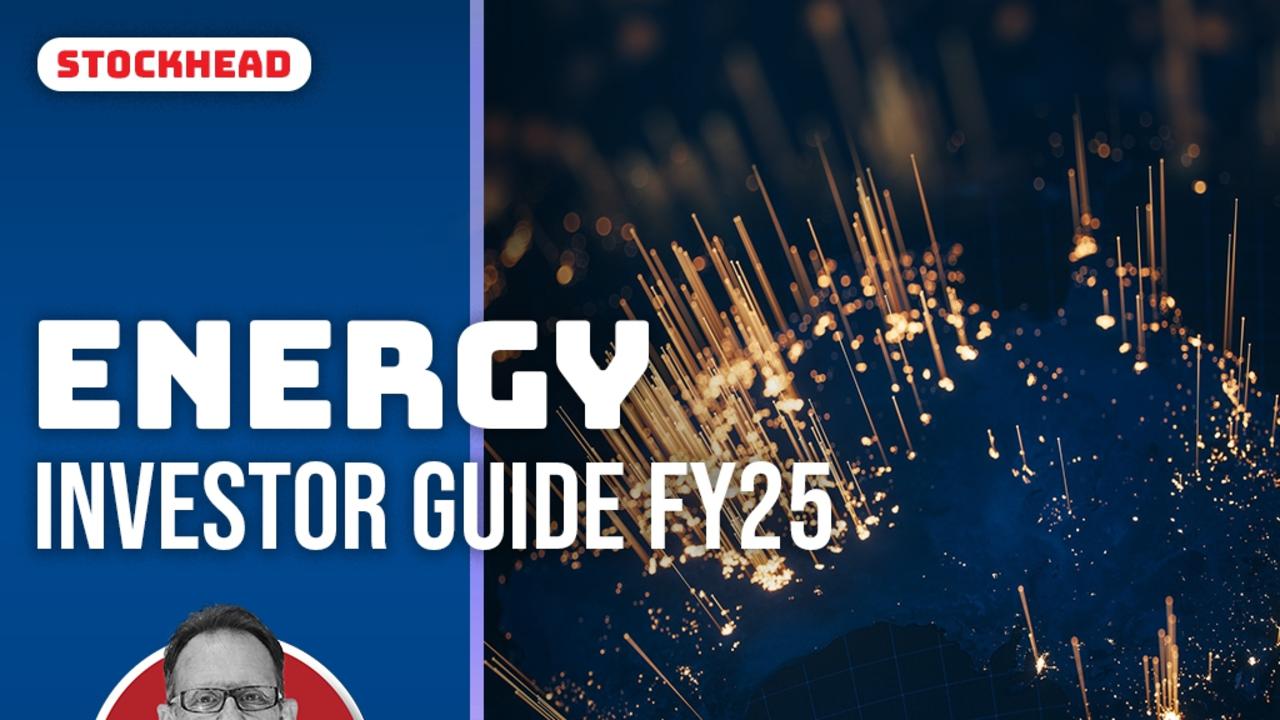‘Clean’ hydrogen from coal? Japan’s betting $2bn on Latrobe Valley getting tech right
Japan is committing more than $2 billion as it doubles down on ‘clean’ hydrogen – sourced from Latrobe Valley coal. But not everyone is convinced.

Japan is doubling down on hydrogen, but it is betting on hydrogen sourced from … Latrobe Valley coal?
Counter-intuitive as that may sound, there is a strategy here, and central to it is the Hydrogen Energy Supply Chain (HESC) project in Victoria’s coal capital, which has nabbed a multibillion-dollar investment ($2.35 billion) from Japan’s Green Innovation Fund to progress through the commercialisation phase.
For the latest energy news, sign up here for free Stockhead daily newsletters
Funds will be delivered via Japan Suiso Energy (JSE), comprising Japanese manufacturer Kawasaki Heavy Industries and gas company Iwatani Corporation – the same firms involved in the “landmark” shipment of liquefied “clean” hydrogen to Japan last year.
The $500 million pilot project sparked controversy at the time with less than half of the 2.6 tonne hydrogen shipped (one tonne) having been produced with the technology.
The gas had been extracted using dirty, brown coal as its primary feedstock before being transported aboard the Susio Frontier ship to Japan, where the hydrogen was burned in coal-fired power plants.
According to Tim Buckley, director of independent think tank Climate Energy Finance, the project was partly funded by $120 million of Australian taxpayers’ money, split between the Victoria and Queensland state governments.
NOW READ: Hydrogen transport proves viable but critics knock its ‘clean’ credentials
Blown away by the $2 billion subsidy for HESC, the single worst hydrogen project on the planet.
— Ketan Joshi (@KetanJ0) March 7, 2023
Please enjoy my thread from last year on this total mess https://t.co/B9ps2cmXM0
Carbon capture and storage under fire
In this new case, a newly formed J-POWER and Sumitomo Corporation Joint Venture (JPSC JV) expects to supply 30,000 tonnes of clean hydrogen gas per year to a liquefaction and shipping facility (at the industrial port of Hastings in Victoria) owned and operated by JSE.
The consortium plans to extract the hydrogen from Latrobe Valley coal and use CO2 capture and storage facilities in the nearby Bass Strait – a method used by gas companies in an attempt to stop the release of carbon dioxide.
MORE FROM STOCKHEAD: SA project look into battery storage future: Tesla | Oil tipped to climb, solar to shine | Australia a fuel efficiency outlier
Australia’s only large-scale carbon capture and storage project, Chevron’s Gorgon CCS facility, operated at just over half its promised capacity in FY21, due to various issues such as sand clogging the CCS equipment.
It was meant to store all the carbon dioxide from offshore reservoirs and at the very least, “implement all practicable means” to bury at least 80 per cent of the pollutant.
Instead, Chevron injected just 1.6 million tonnes of reservoir CO2 underground and vented to the atmosphere 3.4 million tonnes, according to an annual Gorgon environmental report.
Consortium says step on path to net zero
The consortium believes the HESC project will help reduce atmospheric CO2 on the path to net zero by 2050 and at full commercial scale, create many sustainable energy jobs.
“This is a complex project and there is still some way to go in terms of approvals, design, construction and commissioning but this is a major boost for the Victorian economy on its journey towards a clean energy future,” Japan Suiso Energy CEO, Dr Eiichi Harada said.
“The commitment gives all participants in the hydrogen supply chain the confidence to progress to the next stage of commercialisation.
“This is truly a watershed moment for our combined efforts to decarbonise global energy production.”
hey @TimWilsonMP it’s a japanese project that turnbull and andrews govts put $50m into each 4 years ago… nothing to do with your gov’t.
— 💧simon holmes à court (@simonahac) January 21, 2022
…and it’ll ship ~3 tonnes of H₂ total. that’s it.
…pretty underwhelming, like all of your carbon policies. https://t.co/3agpNmLLD3
Japan to keep working with fossil fuel companies
But while the move comes as part of Japan’s push to accelerate its efforts to decarbonise, according to The Climate Action Tracker (TCAT) – an independent scientific project that tracks government climate action and measures it against the globally agreed Paris Agreement – its Nationally Determined Contribution (NDC) is “insufficient”.

“Japan needs to further accelerate its low-carbon transition, particularly as a member of the G7 group, which recently committed in June 2022 to achieve fully or predominantly decarbonised electricity by 2035 and to end fossil fuel subsidies by 2025,” the organisation has said.
In its latest NDC, Japan is aiming for a 46 per cent emissions reduction by 2030 below 2013 levels (and 50 per cent as an aspirational target).
“While this is a significant step forward from the previous 26 per cent reduction target, it still falls short of the more than 60 per cent to reach 1.5°C,” TCAT said.
Visit Stockhead, where ASX small caps are big deals
At the end of the day, from Buckley believes, we will continue to see Japan working in concert with fossil fuel companies.
“They are our largest fossil fuel buyer and trade partner and need a fig leaf to hang their hat on at the end of the day,” he said.
“Last time I checked, there won’t be a ship ready to transport hydrogen (efficiently and cleanly) in the next decade … it looks like they are pushing carbon capture storage and hydrogen shipping – neither of which are proven technologies.
“If the Japanese government want to commit two billion dollars into an unproven pilot facility, good luck to them, but I don’t want to see a huge amount of taxpayer money going into a project that is designed to promote the extension of more high-emitting coal gasification technologies that have continually failed to work globally.”
This content first appeared on stockhead.com.au
SUBSCRIBE
Get the latest Stockhead news delivered free to your inbox.Click here


